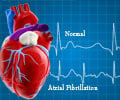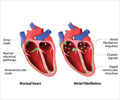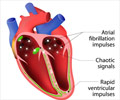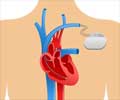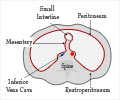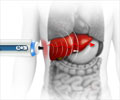New population-based approach helps identify families at risk of atrial fibrillation (AF) and atrial fibrosis. Early identification and follow-up of high-risk groups, can prevent AF and its consequences of stroke, heart failure, and mortality.

‘Early identification and follow-up of high-risk groups through this new population-based approach can help prevent atrial fibrillation and its consequences of stroke, heart failure, and mortality.’





Atrial fibrosis is a scar tissue that forms around the heart, are genetically at high-risk of developing the condition.“Traditional methods have been tried by gifted scientists and not yielded the results that we hoped for,” said Brent Wilson, MD, PhD, director of the Cardiovascular Center and Cardiology Clinical services at U of U Health and first author on the paper. “We took a different approach to identify people with AF. We merged resources unique to the state to make real progress.”
Wilson collaborated with Lisa Cannon-Albright, PhD, Chief of Genetic Epidemiology and reknown expert in population genetics, Frank Sachse, Senior Scientist at the Cardiovascular Research and Training Institute, and Nassir Marrouche, Executive Director of the Comprehensive Arrhythmia Research and Management (CARMA) Center at U of U Health, who developed a database of more than 2,000 patients diagnosed with atrial fibrillation using late gadolinium enhanced magnetic resonance imaging (LGE-MRI).
According to Marrouche, this form of MRI is very powerful.
“Now we can define high-risk groups early and follow them using LGE MRI to hopefully detect or even prevent atrial fibrillation and its consequences of stroke, heart failure, and mortality,” said Marrouche, a contributing author on the study.
Advertisement
“This database is huge; [it] essentially [includes] everyone in Utah going back to the original pioneers [and is paired with] medical records to look for people with AF and left atrial fibrosis,” Wilson said.
Advertisement
Wilson notes that not every person with atrial fibrillation and left atrial fibrosis have genealogy data available in the UPDB. In addition, women have lower linkages in the database due to name changes. The UPDB is also predominantly a reflection of the genetics of people of Northern European origin.
The Utah group hopes to use these results to begin gene sequencing in high-risk families to identify a gene variant that could cause fibrosis or atrial fibrillation. These findings could help people across the country and the entire world.
“The results of this unique study design show atrial fibrillation with fibrosis is a specific subset of the disease that has a strong genetic contribution,” said Cannon-Albright. “It is exciting for us to see Utah resources providing new understanding to the genetics of many different diseases.”
Source-Eurekalert

